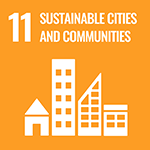Earthquake and Tsunami Disaster Mitigation in the Marmara Region and Disaster Education in Türkiye
Principal Investigator


Prof. Dr.
Director, Kandilli Observatory and Earthquake Research Institute, Bogazici University
Haluk Ozener
ODA Recipient Country
Republic of Turkey
Research Institutions in Japan
Japan Agency for Marine-Earth Science and Technology (JAMSTEC) / The University of Tokyo / Edogawa University / University of Hyogo
Research Institutions in Counterpart Country
Kandilli Observatory and Earthquake Research Institute, Bogazici University (KOERI)
Adoption fiscal year
FY 2012
Research Period
5 Years
Overview of the Research Project
Using simulations to visualize sea-bottom observations and other research results
The Marmara Sea region has a high population density, and includes Istanbul, the center of Türkiye's economy. However, under the sea is there a seismic gap associated with a giant earthquake. Considering the level of damage caused by the 1999 Izmit earthquake in the neighboring region to the east, the risk in Marmara is large. Despite that risk, Türkiye still has many outstanding issues for disaster mitigation, including building structures that are not compliant with seismic codes. This project will make seismic observations of the sea-bottom and surrounding regions, and produce simulations that make the disaster risk visual. In order to build a strong, long-lasting awareness of disaster preparedness, the project team will organize Regional Disaster Prevention Communities together with local authorities and other entities, and will disseminate the information about disaster prevention through the media to deepen the understanding of disasters.
Providing a scientific basis we will advance disaster education, and it can be applied to earthquake research in Japan
The project will raise the accuracy and speed of existing real-time earthquake and tsunami analysis in Türkiye. Through progress in disaster education based on scientific evidence, we will aim to raise the people's awareness of disaster, and by means of joint proposal for disaster management, will attempt to extend the benefits of the research outcomes to the whole of Türkiye. The research will also assist in elucidating the mechanisms of earthquakes anticipated in Japan, such as Tokyo metropolitan near-field earthquakes and the interconnected Tokai, Tonankai, and Nankai earthquakes.
Photo gallery
Research Project Web site
Press Release
Links
Projects
Contact Us
Japan Science and Technology Agency (JST)
Department of International Affairs
SATREPS Group
TEL : +81-3-5214-8085
Related articles by Category
- Disaster Prevention and Mitigation
Disaster Prevention and Mitigation

 Kingdom of Tonga
Kingdom of Tonga
Volcanic island nations working together to reduce the risk of eruption and tsunami disasters!
Disaster Risk Reduction of Widespread Volcanic Hazards in Southwest Pacific Countries
- Türkiye
Disaster Prevention and Mitigation

 Republic of Turkey
Republic of Turkey
Use disaster mitigation science to reduce the damage from massive active-fault earthquakes!
Establishment of a Research and Education Complex for Developing Disaster-resilient Societies - MARTEST
- SDGs : Goal.11
Disaster Prevention and Mitigation

 Republic of El Salvador
Republic of El Salvador
Protecting international port cities from compound disasters with dominostyle chains of destruction!
Compound Disaster Risk Reduction associated with Large Earthquakes and Tsunamis




















